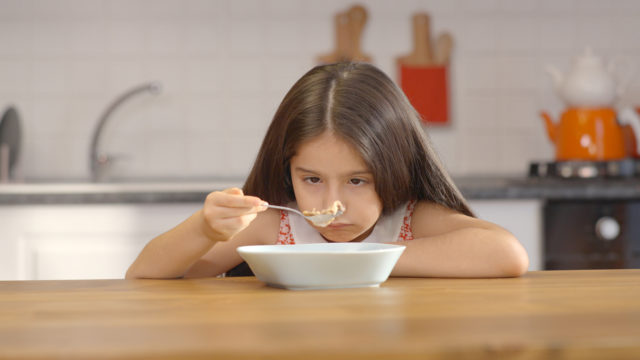TOPICS
Eating & Eating Disorders
Explore our resources for eating disorders in children to learn about types of eating disorders and how to recognize the most common signs.

Resources for Eating Disorders in Children
When most people think of an eating disorder, what comes to mind is a painfully thin young woman who eats almost nothing. But not everyone with an eating disorder appears underweight, and not all are women.
There are several different kinds of eating disorders. Three of the most common eating disorders in children and adolescents are anoxeria nervosa, bulimia nervosa, and binge eating disorder.
Extreme dieting or overeating and intense focus on weight are some of the most common signs that a child or teenager might have an eating disorder.
If you think your child may have an eating disorder, it’s important to talk to their doctor as soon as possible.
Eating Disorder Basics
A lot of kids worry about how they look. It can be hard to tell the difference between normal behavior and an eating disorder. But parents can keep an eye out for signs of unhealthy eating habits and learn when it makes sense to intervene.
Anorexia Nervosa
Anorexia is an eating disorder that can cause kids to starve themselves. Children with anorexia believe they are too fat, even though they often appear extremely thin to other people.
Bulimia Nervosa
Bulimia is an eating disorder that causes episodes of bingeing (out-of-control eating) and purging (throwing up, using laxatives, not eating, or extreme exercise).
Binge Eating Disorder
Kids who have binge eating disorder eat large amounts of food very quickly and cannot control their eating. They usually overeat in secret and feel guilty and ashamed about it.
Picky Eating
Some children are very picky and eat only a limited range of foods. They may even become undernourished as a result. Kids who are extremely picky may have a disorder called ARFID.
Eating Disorders in College
The college years are when young people are most at risk of developing an eating disorder.
Treatment for Eating Disorders in Children
The latest treatments for eating disorders in children focus on helping kids change unhealthy eating habits, with lots of support from their families.
Eating & Eating Disorders
Ask an Expert
All Eating & Eating Disorders
Resources





















